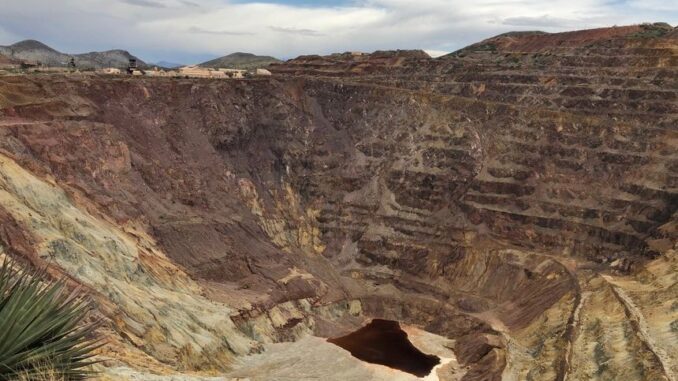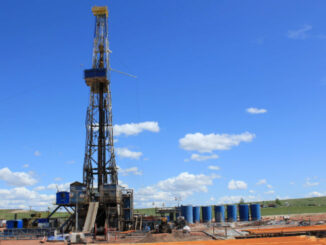
California made a stunning decision last year—that by 2035 all new cars sold in the state must have at least 2½ times as much copper as conventional cars today. That’s not literally what the mandate said, of course, but it’s the practical effect of ordering all cars to be electric in the next 12 years. “Big Shovel” will compete with “Big Oil” as mining ramps up to supply the vast increase in a wide range of minerals that energy transition requires. But getting everything that will be needed will be tough.
The drive toward energy transition will increase demand for lithium, cobalt and other minerals many times over. An offshore wind project uses nine times the minerals of a natural-gas-fired power plant of the same generating capacity.
As countries roll out targets for “net zero” carbon emissions by 2050, it’s becoming clear how difficult it will be to source this huge increase in minerals. The U.S. and Japanese governments, the European Union and a host of multilateral organizations have issued alarming reports about the magnitude of the challenge. The International Monetary Fund warns that striving to achieve net zero by 2050 will “spur unprecedented demand for some of the most crucial metals,” leading to price spikes that “could derail or delay the energy transition itself.”
Consider a recent S&P Global study on copper. Much of the energy transition is predicated on electrifying as much as possible, as fast as possible. That will require a huge amount of copper, as it is the “metal of electrification.” The report concludes that translating the 2050 net zero goals into the equipment and technologies that will be needed—electric-vehicle batteries and charging stations, offshore wind, onshore wind, solar panels, battery storage, etc.—adds up to a doubling of the need for copper by the mid-2030s.
World copper production is highly concentrated geographically, more so than oil production. Three countries—the U.S., Saudi Arabia, and Russia—produce 40% of world crude-oil supplies. Two countries mine about 40% of world’s copper supplies—Peru, where the government is in disarray after the president was impeached and arrested, and Chile, whose government is struggling between its populist agenda and the need for economic growth.
This instability is a particular problem for mineral extraction because developing a major new mine takes 15 to 20 years or more. That’s partially because of the sheer amount of planning, logistics and construction required. A good part of the time is also taken up by the arduous process of negotiating and obtaining permits, which shifting government policies and regulatory complexity slow down. The huge $7 billion Ouy Tolgoi underground mine in Mongolia, which just went into operation, will be the fourth-largest copper mine in the world. Getting there entailed many years and a multitude of delays, and even now the project is far from finished. “It’s not been a smooth ride,” Jakob Stausholm, CEO of Rio Tinto, the mine’s operator, told the press. “Let’s be honest about that.”
As the years pass and a project begins, much can go wrong, especially without a stable government and policies. Though the rise in mineral prices will stoke investment and therefore new supply, it will also stoke populist interest in changing the government contracts that set the rules for mining operations—a challenge the late economist Ray Vernon described as the “obsolescing bargain” that could constrain mineral supplies.
Let’s say a company invests $6 billion to develop a new mine. The government and executives celebrate at a banquet with toasts and little flags on the table, but a few years later a populist regime is elected. The new government, noting that the price of the commodity is going up and seeing an opportunity to profit, demands a renegotiation of the contract and an increased share of revenue. The company replies that it’s protected by the sanctity of its contract and halts new investment. As a result, output won’t increase to the degree that rising mineral prices would suggest.
The quest for net zero emissions will face similar challenges with other commodities, where the growth in demand will be much greater. Seventy percent of cobalt, critical for electric-vehicle batteries, comes from the Democratic Republic of the Congo, where large mining operations coexist with small, hand-dug mines in which both adults and children work.
There’s a further complication—about 60% of the world’s lithium is processed in China, and 47% of copper is smelted there. By comparison, the U.S. processes 4% of world copper. Once the U.S. had more than a dozen copper smelters; now it has two.
With great-power competition intensifying, many nations are concerned about having too heavy a dependence on China. The U.S. has taken the lead in establishing the Minerals Security Partnership, which aims to diversify mineral supply chains. Some aspects of the massive Inflation Reduction Act aim at building up mineral supply and processing either in the Americas or like-minded countries.
But rejiggering the mineral supply chains won’t be easy. Copper production has fallen by half in the U.S. in recent decades, and dependence on imports continues to grow. Getting permits for new projects is difficult, subject to repetitive and lengthy reviews by regulatory agencies and recurrent challenges in courts. And costs for mining and processing in the U.S. tend to be considerably higher than in other countries.
There will be countervailing forces to those that would constrain supply. Despite these challenges, rising prices will be a powerful signal for innovation. Companies and investment will seek to increase output from existing mines as well as to develop new technologies, substitute materials, and recycling on a much larger scale. In fact, funding is already flowing into those areas, but the impact won’t appear overnight.
One of the leading wind and solar developers in the U.S. summed up the issue recently: “The single biggest challenge for renewables going forward is how supply chains evolve.” It’s becoming clear that there is a very big gap, not easily closed, between aspirations for energy transition and the availability of the minerals needed to implement those goals.



